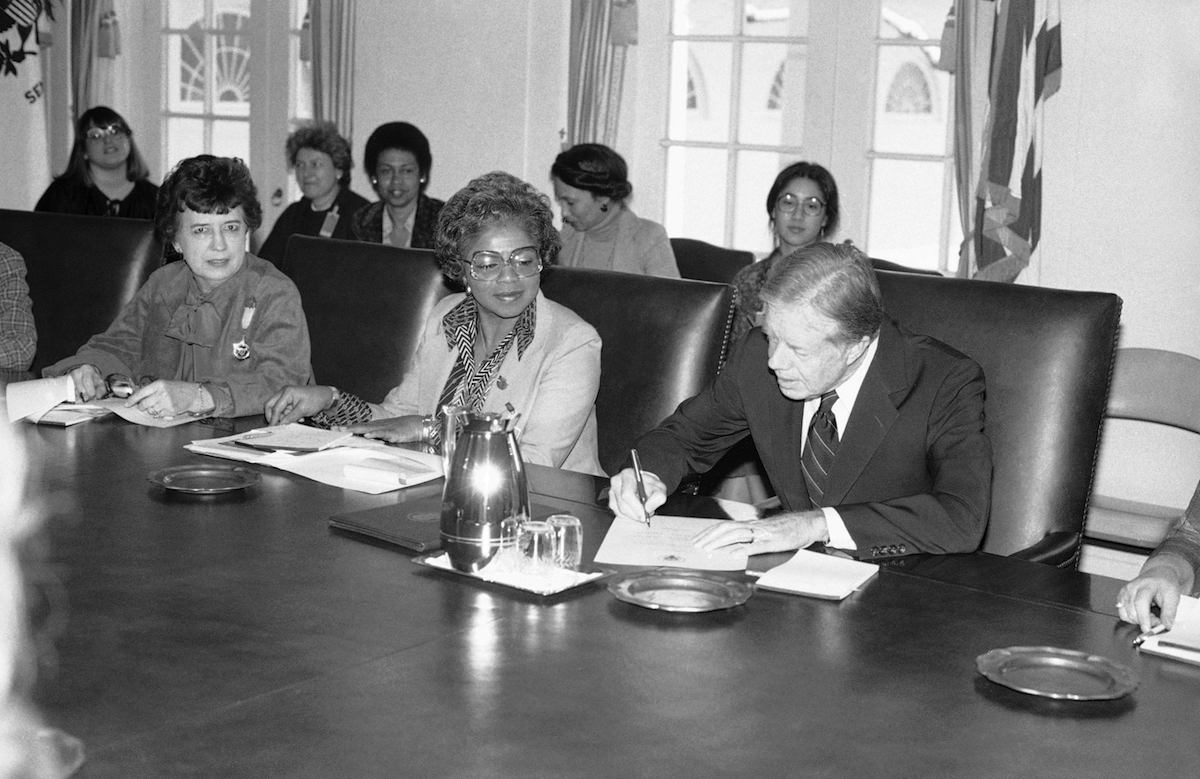
Many things have come to womankind surprisingly recently: The right to vote. The right to own property. And, perhaps less surprisingly, the existence of Women’s History Month.
Before women had the whole month, the U.S. recognized Women’s History Week; before that, a single International Women’s Day. Dedicating the whole month of March in honor of women’s achievements may seem irrelevant today. But at the time of the conception of Women’s History Week, activists saw the designation as a way to revise a written and social American history that had largely ignored women’s contributions.
The celebratory month has its roots in the socialist and labor movements — the first Women’s Day took place on Feb. 28, 1909, in New York City, as a national observance organized by the Socialist Party. It honored the one-year anniversary of the garment worker’s strikes in New York that had taken place a year earlier, when thousands of women marched for economic rights through lower Manhattan to Union Square. (That strike in turn honored an earlier 1857 march, when garment workers rallied for equal rights and a 10-hour day.) Within two years, Women’s Day had grown into an international observance that spread through Europe on the heels of socialism.
Meanwhile, in the U.S., feminist activists took issue with how the history books largely left out the story or contributions of women in America. In light of that imbalance, one group during the 1970s set about revising the school curriculum in Sonoma County, Calif., according to the National Women’s History Project. Their idea was to create a “Women’s History Week” in 1978, timed around International Women’s Day, which the U.N. had begun officially marking in 1975.
The observance spread to schools around the county, and grew into a cause for celebration. Organizers held an annual “Real Women” essay contest, hundreds of women took part by giving presentations to students in their classrooms and the whole week culminated in a Santa Rosa, Calif. parade.
In 1979, Molly Murphy MacGregor, one of the week’s organizers, traveled to Sarah Lawrence College in New York for a conference with the Women’s History Institute. The participants heard about the week in Sonoma County, and the celebration soon spread across the country.
Gerda Lerner chaired the Institute at the time of the conference, and backed the movement to garner national recognition. As the week picked up steam, organizers lobbied Congress and President Jimmy Carter proclaimed the first national Women’s History Week for March 2-8, 1980.
“Women’s history is women’s right—an essential, indispensable heritage from which we can draw pride, comfort, courage, and long range vision,” Lerner was quoted saying in Carter’s proclamation.
President Ronald Reagan passed further proclamations announcing Women’s History Weeks, but by then some areas had already extended their celebrations for a month. The Women’s National History Project lobbied for a longer observation, and Congress passed a proclamation in 1987 establishing Women’s History Month.
Now, Presidents pass annual proclamations announcing Women’s History Month, and the National Women’s History Project declares a theme each year. The 2018 theme is “Nevertheless, She Persisted.”
More Must-Reads From TIME
- The 100 Most Influential People of 2024
- The Revolution of Yulia Navalnaya
- 6 Compliments That Land Every Time
- What's the Deal With the Bitcoin Halving?
- If You're Dating Right Now , You're Brave: Column
- The AI That Could Heal a Divided Internet
- Fallout Is a Brilliant Model for the Future of Video Game Adaptations
- Want Weekly Recs on What to Watch, Read, and More? Sign Up for Worth Your Time
Write to Julia Zorthian at julia.zorthian@time.com